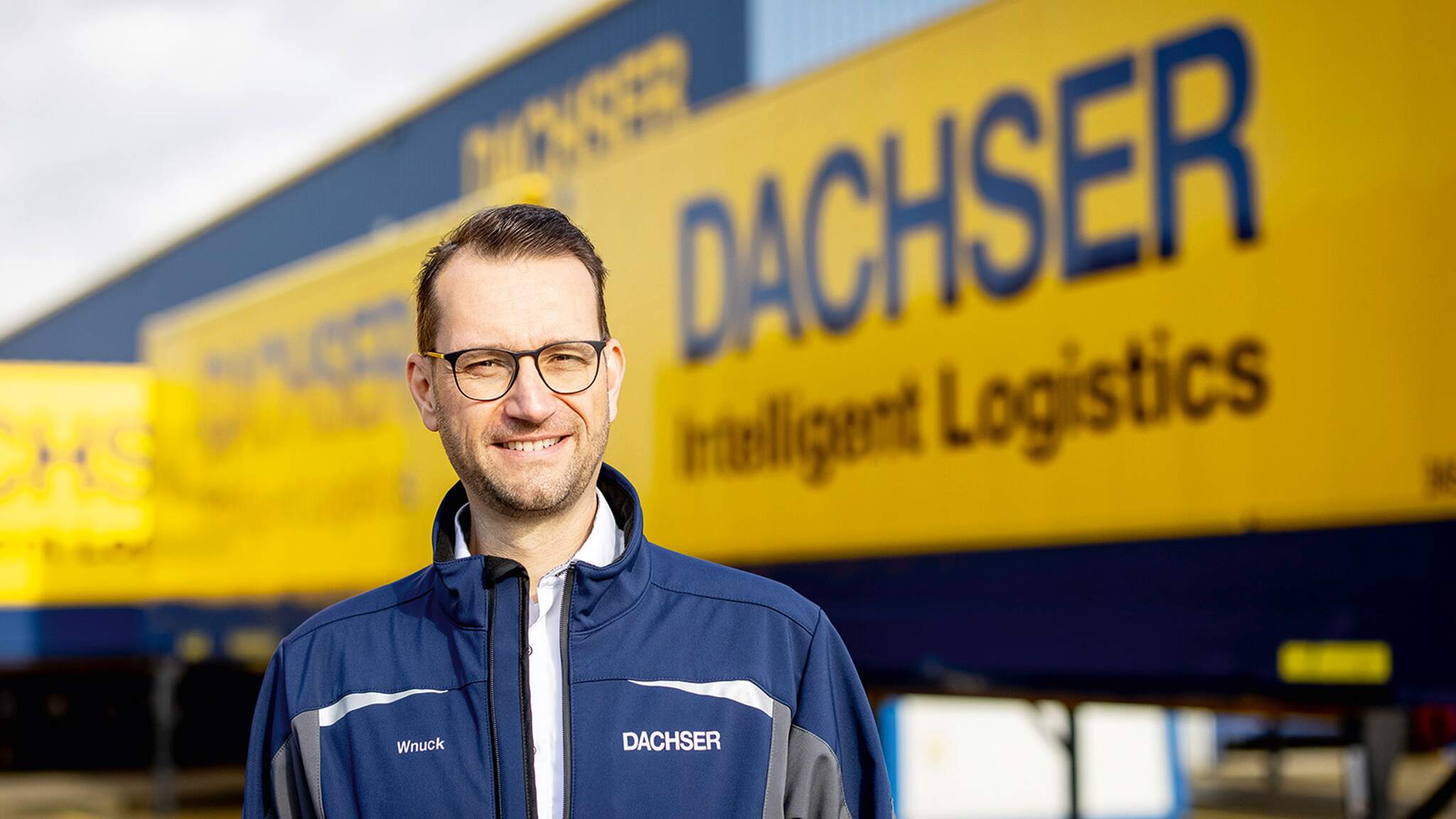Safely packed

Damage-free transportation of goods is essential for managing increasingly demanding supply chains. How can appropriate packaging and foresight help? We asked an expert: Stephan Wnuck, Team Leader Loss & Damage at DACHSER.
Mr. Wnuck, moving goods always involves a certain transport risk. How high is the probability of shipments being damaged along the supply chain?
In our Food Logistics and European Logistics networks, we have thousands and thousands of shipments on the road for our customers every day. Moving goods from A to B always involves the risk of damage, and there’s no way to rule this out completely. The basic prerequisite for readying stowage for transport and securing loads is to use packaging that is appropriate for the stress and keeps its shape.
Unfortunately, time and again, we have to deal with packaging that is the wrong size, oversized pallets, packaging of inferior quality, as well as missing instructions for proper handling or insufficient labeling of the goods. Poor securing of load units on the pallet, inadequate shrink wrapping or strapping, goods hanging off the pallet, or completely unpackaged goods are also among the defects that come up over and over again.
Ideally, what is the role of correct packaging in groupage transport?
During truck transport, goods must be protected against the dynamic loads that occur on the road. According to the road traffic regulations, emergency or dangerous braking and sudden evasive movements in the course of transport are considered normal effects that must be factored in to transport . Even during emergency braking, the pallet must not fall apart. It must also be able to withstand the stresses of cargo handling and be loaded in as form-fitting a way as possible.
Last but not least, packages must be prepared in a way that makes unnoticed access or manipulation of the contents impossible. This point is particularly essential for theft-prone goods. All this may sound obvious, but that’s not always the case.
What are the main causes of possible damage, and what does this mean for any additional effort that goes into the process?
Much of the damage occurs in the course of handling during groupage loading and the associated stresses. During cargo handling, there’s basically no way to avoid loading and set-down impacts or pushing, pressing, and pulling maneuvers, as well as contact or friction with packaging. These kinds of issues are absolutely normal transport- and handling-related stresses.
It’s not uncommon for damage to a shipment to result in enormous additional effort. Quite apart from the additional administrative work for all parties involved, there’s the further burden of organizing return and replacement deliveries, tidying up, and, if necessary, cleaning.
Stephan Wnuck ist Team Leader Loss & Damage at DACHSER
What can you do to minimize this?
DACHSER’s Loss & Damage team analyzes the processes in Road Logistics in a structured way. Our damage database lets us trace the causes of damage so we can tailor preventive measures for and with our customers.
Maximum damage prevention for the goods entrusted to us is DACHSER’s top priority and an indispensable aspect of our quality standards. This relies not just on the customer packaging and labeling the goods in a way that is suitable for the stresses involved, but also on us ensuring careful handling and professional load securing at all interfaces. Every type of goods and every transport type has its own options for securing goods. We and of course the customers just have to make systematic use of them. We’re all in the same boat there.
How do you engage customers in proactive loss prevention?
We use our benchmarks to specifically analyze the type of damage. Then we take the results, together with a specially developed checklist for documenting conspicuous features of the transport packaging used, and enter into dialog with customers and look at where there is potential for optimization. During consultations, we also involve experts from packaging companies and neutral third-party experts, if necessary. This results in a very open, constructive dialog. The fact that most customers really appreciate this reaffirms our commitment to this systematic and targeted approach to loss prevention.
If something does break, we generally know where the damage occurred thanks to our close-meshed interface control. That lets us find possible sources of damage and, ideally, eliminate them. If possible, we also solve the problem on-site. Taking an example from our food business, if a single carton on a pallet of fresh produce is damaged, we take the carton out and credit it to the customer, which means they can still accept the rest of the shipment rather than refusing the entire pallet. In European Logistics, things look a little different. We can’t just take one of five garden gates off the pallet.
What training do DACHSER employees receive to prevent damage in transshipment?
To achieve a uniformly high standard of quality, we offer extensive loading training. To this end, all branches are currently training trainers in the areas of load securing and damage and loss prevention. These training courses are not only about safe loading, but also about preventing damage and optimizing use of the means of transport. We’ve already trained more than 100 trainers during the pandemic, who in turn are now starting to train employees. The program was launched in Germany and is now being rolled out across Europe.
Thank you for speaking with us.
